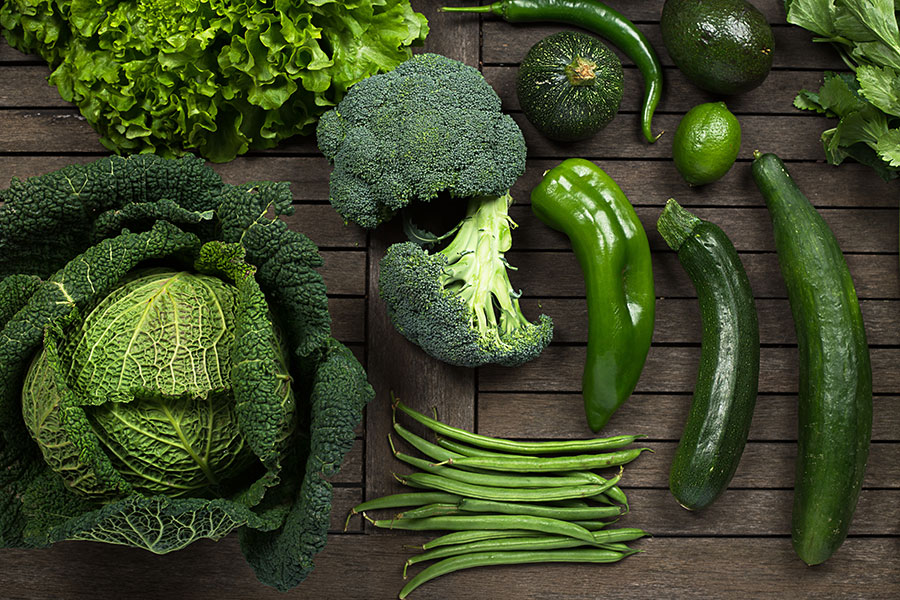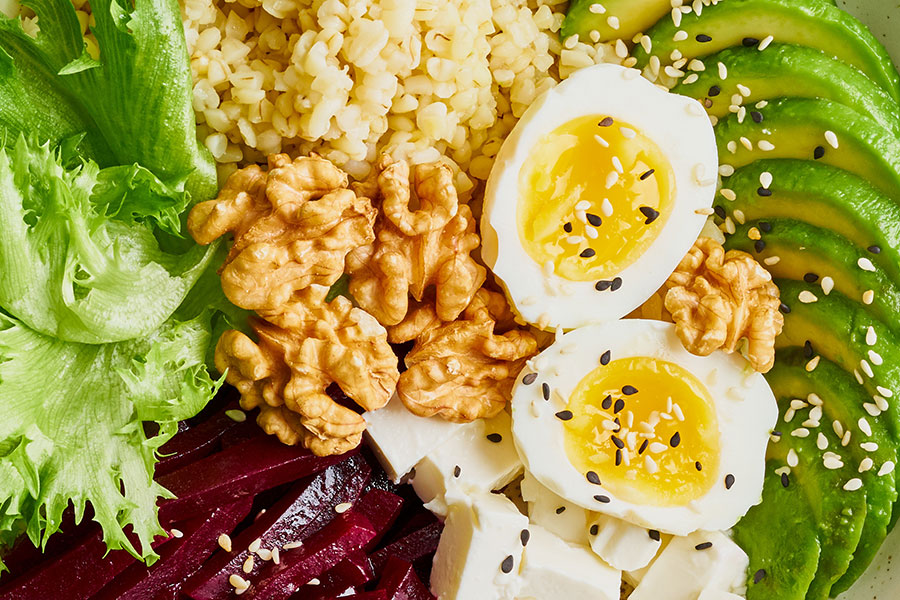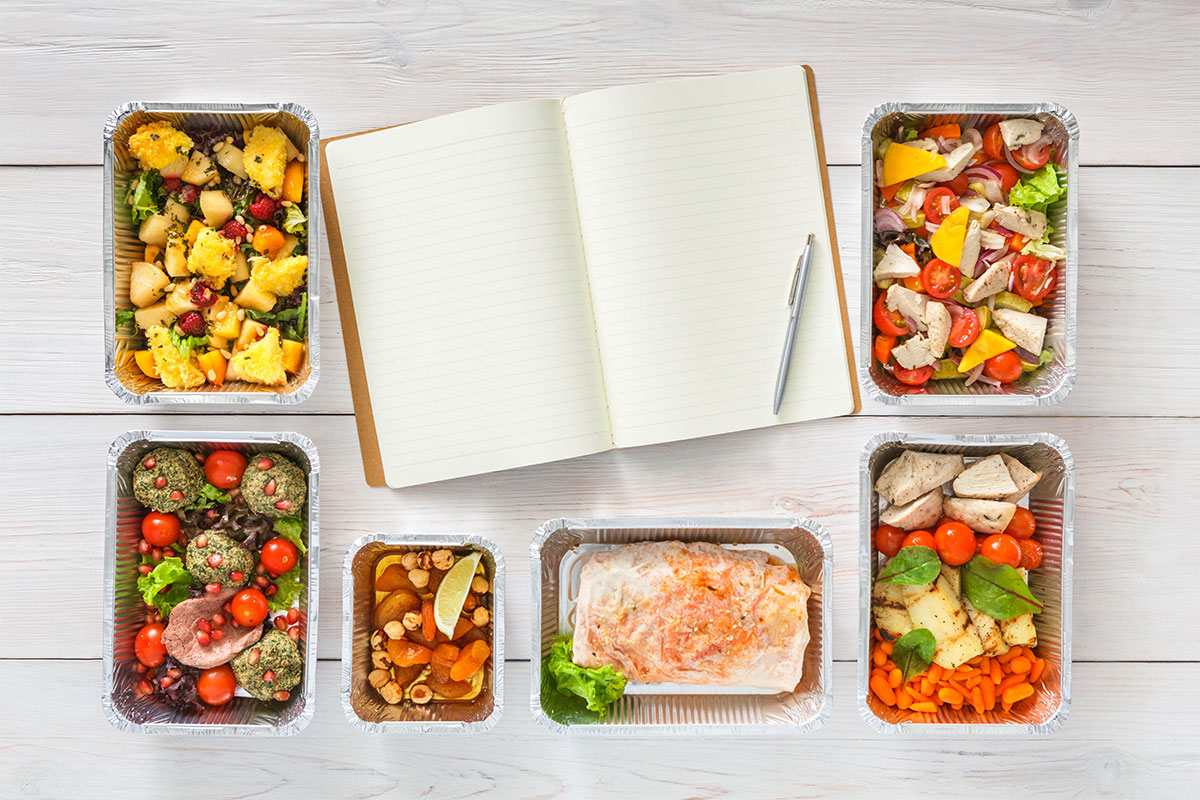Nutritious Green Foods You Didn’t Know About
Good nutrition is all about variety! Browse through our list of unusual fruits and veggies and give yourself a chance to try something new.


Will taking beet root help me gain muscle? How does it work?

The evidence for beetroot supplementation is slowly gaining ground. Some studies show that it may be helpful for intermittent, high-intensity workouts as well as endurance training. Surprisingly, as a newer ergogenic aid, beetroot juice (BJ) has already met the Australian Institute of Sport’s highest evidence classification for effectiveness – joining beta-alanine, caffeine, creatine, glycerol, and bicarbonate – at threshold doses for certain situations in sport.
Beetroot, like several green leafy vegetables, has very high nitrate levels. According to a laboratory assay, about 100 ml (~3.5 fl oz) of beetroot juice provides between 48-150 mg nitrate and 10 grams of beetroot powder provides 165 mg nitrate, whereas studies generally used 300-600 mg of nitrate.
Beetroot juice’s effect may come from nitrate’s role as a precursor to nitric oxide, a vasodilator which can enhance oxygen delivery to muscle tissue. A review of 9 studies concluded that “the improvements observed were attributed to faster phosphocreatine resynthesis which could delay its depletion during repetitive exercise efforts. In addition, [BJ] supplementation could improve muscle power output via a mechanism involving a faster muscle shortening velocity.”
As with all ergogenic aids, the theory is that by enabling stronger/longer workouts, the increased output will promote muscle growth. Currently, the magnitude of research supports beetroot juice’s impact on performance, not body composition. So keep working out!
– Debbie J., MS, RD
This article should not replace any exercise program or restrictions, any dietary supplements or restrictions, or any other medical recommendations from your primary care physician. Before starting any exercise program or diet, make sure it is approved by your doctor.
Some questions have been edited for length and/or clarity.
 Have a nutrition question? Our registered dietitian is ready to help!
Have a nutrition question? Our registered dietitian is ready to help!
Email nutrition@lafitness.com or submit your question below and it may be featured in an upcoming article!
Good nutrition is all about variety! Browse through our list of unusual fruits and veggies and give yourself a chance to try something new.
Does liberally salting your food help you pump more iron in the gym? Registered Dietitian, Debbie James, investigates the claims!
One frequently asked question is about the recommended intake of protein. We hear you! Here is everything you need to know.

Welcome to the 26th episode of the Living Healthy Podcast, presented by LA Fitness.
On this **SPECIAL EDITION** of Living Healthy, it’s a fitness vs. nutrition showdown with guest experts Debbie James, RDN and LA Fitness Master Trainer, Geoff Fox. Who will be crowned the winner on this episode’s battle of the brains? Listen and find out!
And play along with us and let us know how you did! 🙂
How Are We Doing?
Special Shout-out
Thanks to our listeners who have sent in emails letting us know what you think of the show! Special shout out to Juliana M. who recently wrote in and said:
“I just wanted to say thank you because your podcasts are helping me transition into a healthier lifestyle especially after listening to episode 20 on fast food […] maybe one of your future podcast should be about vegetarian and vegan [options] talking about if it’s healthy or if we actually need meat. I’m on the crossroads.”
Well, Juliana, we heard you and we think that’s a great idea, so keep an eye out for our upcoming episode on The Plant-Based Diet: What You Need to Know.
This podcast should not replace any exercise program or restrictions, any dietary supplements or restrictions, or any other medical recommendations from your primary care physician. Before starting any exercise program or diet, make sure it is approved by your doctor.
Intro
Begins at 0:01
Introduction of LAF Registered Dietitian, Debbie James, and LA Fitness Master Trainer, Geoff Fox
0:52
Rules Announced
1:30
Round 1 – The Fitness Round – Begins!
2:26
Round 2 – The Nutrition Round – Begins!
7:50
Round 3 – The LA Fitness Trivia Round – Begins!
16:00
The Winner is Announced!
27:00
Special Member Shout-out
and Outro
27:39
Good nutrition is all about variety! Browse through our list of unusual fruits and veggies and give yourself a chance to try something new.
Does liberally salting your food help you pump more iron in the gym? Registered Dietitian, Debbie James, investigates the claims!
One frequently asked question is about the recommended intake of protein. We hear you! Here is everything you need to know.

What nutrition tracking apps do you recommend? There are so many and I want to know more than just calories.

I’m glad you want to see how your present intake meets nutritional goals! The most comprehensive way is to use a diet analysis program with an extensive database, preferably based on the USDA’s Food Composition Database. Finding an app that can do what computer software or a website can do may be a challenge, but you can get close since the database is public domain and can be accessed by app developers for free.1
Track by Nutritionix is comprehensive, boasting the largest verified food database.2 Consider MyFitnessPal, one of the top dietitian-recommended apps.3 If at goal weight, you may want to focus on nutrients not calories, like Foodility does.4 Calorie Counter by FatSecret offers the ability to see your average for the month, giving you an overall picture.5 Which app you choose may also depend on cost, ease of use, user reviews, and other factors tracked or calculated. Yazio includes an extensive exercise list6 while MyPlate Calorie Counter also helps you keep track of water intake.7
Don’t forget that to get an accurate assessment or your diet, tracking several days is best. Enter everything you eat and drink, the amounts, the actual method of preparation, and all condiments for at least 3 days. The more detailed and specific you are in entering what you ate, the more accurate the report will be. Technology is improving, and the ease is tempting, but don’t exclusively rely on photographic or scanned UPC label inputs.
Though assessing your diet can be an impetus for change, there is no need to constantly analyze what you’re eating every week. What you do with the information gleaned is more important than religiously recording intake. We could all stand to replace smartphone minutes with activity anyway!
Disclaimer: Author and Fitness International, LLC does not endorse or promote any particular nutrition app. Those mentioned are for reference and comparison only.
References:
– Debbie J., MS, RD
This article should not replace any exercise program or restrictions, any dietary supplements or restrictions, or any other medical recommendations from your primary care physician. Before starting any exercise program or diet, make sure it is approved by your doctor.
Some questions have been edited for length and/or clarity.
 Have a nutrition question? Our registered dietitian is ready to help!
Have a nutrition question? Our registered dietitian is ready to help!
Email nutrition@lafitness.com or submit your question below and it may be featured in an upcoming article!
Good nutrition is all about variety! Browse through our list of unusual fruits and veggies and give yourself a chance to try something new.
Does liberally salting your food help you pump more iron in the gym? Registered Dietitian, Debbie James, investigates the claims!
One frequently asked question is about the recommended intake of protein. We hear you! Here is everything you need to know.


Lying back on that beach towel feeling the sun’s warmth and seeing the pool or waves in the distance over your toes is one of the best feelings of the summer season. Don’t let your belly get in the way of that view! Of course, no food targets one specific body part, but these six types are helpful to combat the deposit of intra-abdominal visceral fat (see picture) that wreaks havoc on your ab definition.

Broccoli and other nutrient-rich non-starchy vegetables like green beans, cabbage, and peppers.
Consuming more vegetables equates to having less belly fat and keeping it off. For a group of 175 overweight Latino youth, such vegetable consumption corresponded to 17% less visceral fatty tissue.(1) Danish women that consumed more vegetables and fruit had less gains in waist circumference over a 5-year period.(2)

Beans and other high soluble fiber foods like sweet potatoes, oats, apples, and carrots.
Over a five year period among over 300 African-American and Hispanic-American adults, greater intakes of dietary soluble fiber corresponded with less increase in visceral fatty tissue.(3) A smaller study showed that abdominal skinfold thickness was lower for men with higher fiber intakes.(4)

Lettuce and other lower carbohydrate/ketogenic-acceptable whole foods like nuts, avocado, and eggs.
In a small study over a two-year period, people who followed a very low-calorie ketogenic diet had a greater reduction in waist circumference and visceral fat compared with those on a low-calorie diet.(5) A more modest carbohydrate reduction (43% of calories vs. 55%) still proved effective to lose more intra-abdominal fat for 69 overweight American men & women over two months.(6)
Take heart if you don’t respond to a low carbohydrate diet! Whether low carb intake is beneficial for belly fat loss may depend on your genetics.(7) That’s right – your DNA could determine whether a high-carbohydrate diet (55-65% of calories) might suit you better.

Pork tenderloin and other unprocessed high protein foods such as eye-of-round beef, poultry breast, and fish fillets.
A small study of obese middle-aged Americans showed that a high protein diet (>30% calories) consumed over 6 meals per day resulted in lower abdominal fat after a full year, compared to a heart-healthy diet (15% protein; 3 meals).(8) For Danish adults, higher intakes of red meat were associated with a smaller increase in waist size over a five-year period.(2) However, higher consumption of processed meat and poultry in women was associated with larger increases in waist circumference.(2)

Sardines and other calcium & vitamin D rich foods such as cow’s milk, cheese, yogurt, tofu, and fortified juices and cereal.
Over a year-long period, the more calcium women consumed the less visceral fat they gained.(9) For Danish women, consumption of high-fat dairy related to smaller increases in waist circumference.(2) Among Canadian women, higher intakes of vitamin D were associated with lower abdominal fat.(10)

Coconut oil, and other sources of medium-chain triglycerides (MCT) such as palm kernel oil, dry coconut meat, and raw coconut meat.
MCTs may reduce visceral fat and waist circumference by increasing energy expenditure, satiety, and fat oxidation.(11) They are rapidly metabolized compared to long-chain fatty acids, having less chance to be stored as fat.(11) A review of six studies involving MCT that measured visceral fat showed that all six resulted in more abdominal fat loss than controls.(11)
Ready, set, go! Start NOW eating these six belly-flattening types of food to get your six pack abs in time for summer. Hit the gym, too — then you can feel comfortable kicking off your shoes and hitting the water (or lying next to it).
Good nutrition is all about variety! Browse through our list of unusual fruits and veggies and give yourself a chance to try something new.
Does liberally salting your food help you pump more iron in the gym? Registered Dietitian, Debbie James, investigates the claims!
One frequently asked question is about the recommended intake of protein. We hear you! Here is everything you need to know.


Given that you don’t offer meal plans, how do I to put one together myself? Is it okay to find a good balanced day and just repeat it?

For several Living Healthy blog posts, I have provided a sample menu to help readers see how different foods might be included to meet their goals. These are never meant to be repeated day in and day out, although (with a multivitamin/mineral) one probably won’t end up with a deficiency if you did. The best residential foodservice of highest nutritional quality strives not to repeat menus weekly, but perhaps monthly. By switching the sides, at home I certainly might prepare my favorites meals more often.
Most often when building a client’s meal plan, I don’t start with trying to meet RDAs for all micronutrients. (Gasp!) Unless there is a specific medically therapeutic diet they need to follow, we’ll work with larger parameters first, then fine-tune the plan. Most people are familiar and comfortable with calories and macronutrients, so we translate those into common food servings among different food groups.
Tailoring your own plan rather than following a preset menu means a greater likelihood of adhering to it, thus greater success. Assuming you readers are healthy adults who can control portions*, here’s my advice to construct your own sensible meal plan:
Step One
My short list:
|
Fruit |
Vegetable |
Whole grain |
Starches |
Lean Protein |
Dairy |
|
peach |
Brussels |
oatmeal |
potato |
soy sausage |
nonfat milk |
|
apple |
bok choy |
corn |
pasta |
chicken |
plain Greek |
|
berries |
carrots |
quinoa |
bran cereal |
shrimp |
vanilla yog. |
|
grapes |
green beans |
brown rice |
wheat bread |
tenderloin |
soymilk |
|
melon |
broccoli |
barley |
potato |
beans |
|
Step Two
My one-day example:
|
Breakfast |
Lunch |
Dinner |
Snack(s) |
|
apple |
broccoli slaw |
green beans |
plain Greek yogurt |
|
oatmeal |
corn cob |
sweet potato |
blueberries |
|
soy sausage |
chicken breast |
pork tenderloin |
garbanzo bean (hummus) |
|
nonfat milk |
mayo in slaw |
margarine |
carrots |
|
|
|
2 Milano® cookies |
olive oil in hummus |
Step Three
* If you aren’t good at managing portions and feel you need to count calories, I’d suggest using a meal-planning service or app. For a specific nutrient goal, restriction, or to treat a medical condition, it is best to work with a Registered Dietitian Nutritionist and follow the advice of your physician.
– Debbie J., MS, RD
This article should not replace any exercise program or restrictions, any dietary supplements or restrictions, or any other medical recommendations from your primary care physician. Before starting any exercise program or diet, make sure it is approved by your doctor.
Some questions have been edited for length and/or clarity.
 Have a nutrition question? Our registered dietitian is ready to help!
Have a nutrition question? Our registered dietitian is ready to help!
Email nutrition@lafitness.com or submit your question below and it may be featured in an upcoming article!
Good nutrition is all about variety! Browse through our list of unusual fruits and veggies and give yourself a chance to try something new.
Does liberally salting your food help you pump more iron in the gym? Registered Dietitian, Debbie James, investigates the claims!
One frequently asked question is about the recommended intake of protein. We hear you! Here is everything you need to know.
Be the first to know about exclusive
content, deals and promotions